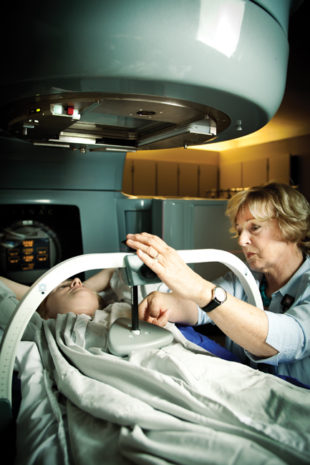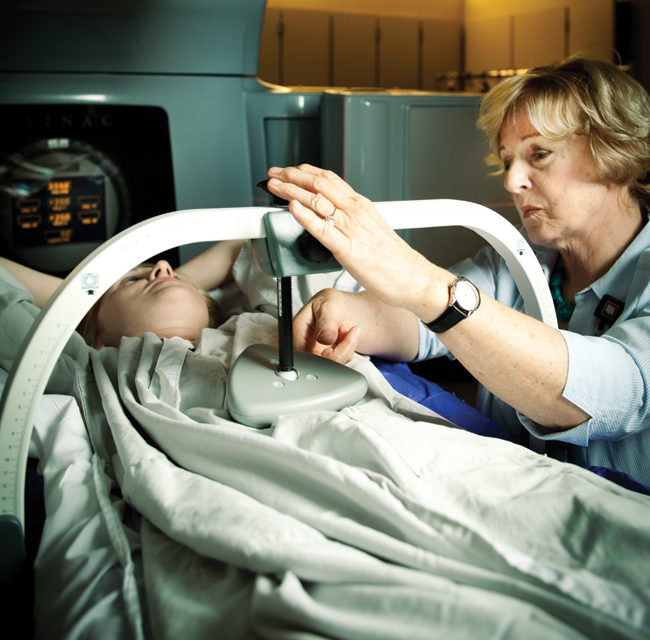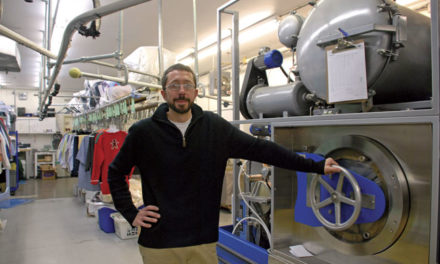BY JANET MANDELSTAM

Ewa Papiez, medical physicist at IU Health, sets up a patient for Stereotactic Body Radiotherapy. Photo by Shannon Zahnle
Like the spokes of a bicycle wheel, multiple beams of radiation all focus on the hub—an inoperable lung cancer tumor—in a new, concentrated form of radiation therapy at IU Health Bloomington Hospital.
The procedure, called Stereotactic Body Radiotherapy (SBRT), delivers highly focused beams of radiation to tumors whose location or size precludes surgery. IU Health began using SBRT in December 2011.
Unlike traditional radiation treatments that are short and generally delivered over 35 days, SBRT is delivered in two to five treatments that last anywhere from 30 minutes to an hour. Once treatment begins, says Kevin Rush, director of cancer radiation centers at IU Health, it occurs every other day. With arms overhead, the patient is encased in a body mold from neck to toe (to restrict movement) and lies flat while the machine moves around him or her, delivering ten beams of radiation.
Of the 225,000 people diagnosed with lung cancer annually in the United States, approximately 11,000 have inoperable, early-stage lung cancer, says Rush. “These are the ones we’re looking at.” The three-year survival rate when treated with traditional radiation therapy was 30 percent in 1990, he says. “With SBRT, that survival rate was 60 percent in 2010. That means 3,000 people are alive after three years who wouldn’t be alive” without SBRT.
It takes a team of trained medical personnel to plan and deliver the treatment with pinpoint accuracy, explains Rush, who likens the process to building a house. The physician, a radiation oncologist, is the guiding hand; the dosimetrist is the architect who designs the specific treatment; the radiation therapist is the carpenter who delivers the treatment; and the medical physicist is the inspector who verifies that the treatment is executed according to plan. “It takes at least a week to plan the treatment,” Rush says, “and everyone on the team has to agree to the plan.” The staff received more than 200 hours of training before IU Health began using SBRT.
The results of treatment generally can be assessed after six months, Rush says. “We just received the results on our first patient, and he had a complete resolution of his tumor. It was gone.”
SBRT currently is used to treat only lung cancer, but Rush says IU Health plans to expand its use to inoperable brain and liver tumors as well.












Will someone with lung cancer loose their hair while on treatment or after treatment?